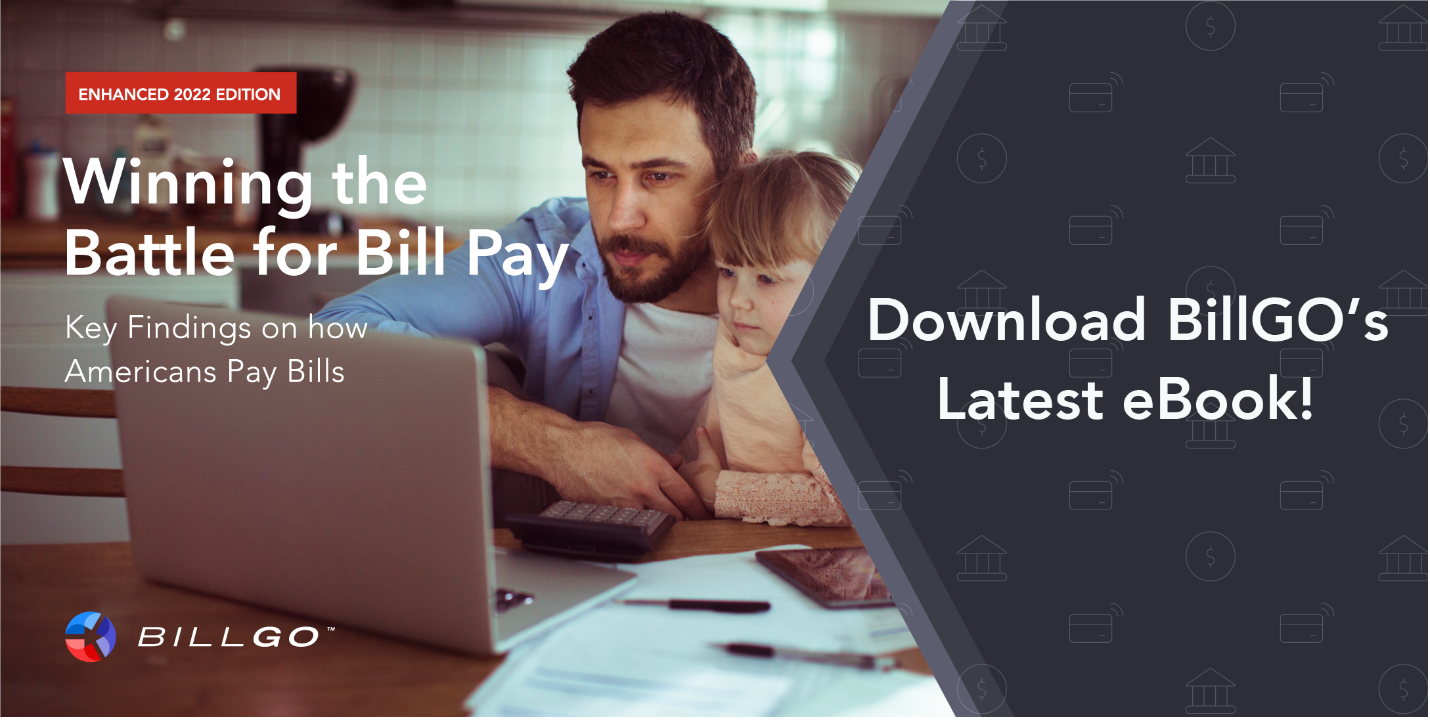Last week we asked, “why should fintechs invest in bill pay technology?”
The answer, it turned out, is fintechs need to embrace modern bill pay for many of the same reasons traditional banks do: modern bill pay enhances customer satisfaction and reduces back-office costs while improving efficiencies.
In other words, the same value propositions that inspire traditional financial institutions (FIs) to upgrade their bill pay technology apply to fintechs as well.
That’s the thing about FIs and fintechs: often, their goals are the same.
Digital First
Included in the sweeping changes unleashed by the pandemic, was the wholesale closure of many bank branches. The industry witnessed a shift in how consumers were banking and quickly pivoted to provide optimal digital experiences. Now, more than two years later, it’s clear the financial services industry enacted a digital transformation that – under normal circumstances – may have taken a decade to complete.
"Just as retail shoppers today expect retailers to provide in-store availability online, banking customers expect an integrated, innovative, and consistent experience when they log into the app their FIs provide."
One reason this swift transformation took place so seamlessly was FIs recognized the value in collaborating with fintechs to fuel the change.
But what played out in the last two years was just the beginning. FIs need to continue thinking digital-first. Yes, nearly every FI now offers mobile banking to their customers, but FIs also need to continue deploying state-of-the-art mobile banking apps if they hope to fully personalize the services they offer their customers.
Just as retail shoppers today expect retailers to provide in-store availability online, banking customers expect an integrated, innovative, and consistent experience when they log into the app their FIs provide. To be successful, many traditional FIs will have to shed legacy technology and transition to a leaner, more modern CX.
This is where fintechs can help.
FIs Adopting a Fintech Mindset
Fintechs have been keeping pace with consumer expectations for the last two decades, intensely focused on improving UX and introducing advanced financial tools.
This is especially true in today’s economy where more Americans than ever live paycheck-paycheck. Financially stressed consumers are looking for ways to cut costs and navigate today’s financial landscape and most are looking to their FIs to show them the way.
Fintechs have a history of quickly pivoting to meet evolving consumer needs, especially when delivering products that enhance financial well-being.
Collectively, fintechs make up one of the largest and fastest-growing market sectors in the world. And a joint study by the World Bank, the Cambridge Centre for Alternative Finance at the University of Cambridge’s Judge Business School and World Economic Forum examined the global economic fallout that followed the eruption of COVID-19 and concluded it was fintechs that were most effective in helping those in need.
According to one of the study’s authors, despite an array of unprecedented challenges, “[fintechs were] resilient and adaptable: contributing to pandemic relief efforts, adjusting operations and offerings to serve vulnerable market segments … while posting year-over-year growth across most regions.”
Learn how BillGO responded to COVID-19 with the launch of its award-winning bill-pay relief hub.
FIs that want to remain relevant in their customers’ eyes should consider adopting the fintech philosophy of relentlessly meeting customer expectations.
FIs and Fintechs Forge Partnerships
As American Banker recently noted, more and more FIs are collaborating with fintechs. One reason behind this trend may be that, in many cases, both industries – banking and fintech – can find the relationship mutually beneficial.
“More and more large FIs will collaborate with fintechs to better meet the needs of their digitally savvy customers."
As Pete Kight, the man behind fintech pioneer CheckFree and BillGO board member said: “Fintechs have found out that earning consumer trust is a lot harder than they anticipated. When you talk about people’s money, people must trust you and earning trust is hard.
“At the same time,” Kight added, “FIs have realized how bad they are at innovation. It’s understandable. The whole FI model is based on managing risk. Taking a culture based on risk management and trying to embrace innovation is nearly impossible. That’s why it’s hard for banks to be disruptive.”
In other words, FIs can bring decades of trust and compliance to the table while fintechs can offer speed, agility and technological innovation.
Last year, PYMNTS asked BillGO CEO Dan Holt what he predicted for 2022. As Holt examined the tea leaves, he said one thing was clear: “More and more large FIs will collaborate with fintechs to better meet the needs of their digitally savvy customers. Today’s consumers expect elegant, secure, easy-to-navigate digital tools that empower them to fully manage their financial lives.
“Large financial institutions will embrace a philosophy that has fueled fintechs for years,” Holt added. “If you don’t deliver on the expectations of today’s digitally proficient consumers, someone else will.”
Financial Well-Being, Bill Pay and BillGO
In the case of BillGO, our real-time bill payment solutions not only enable users to decide how and when they pay their bills, but they also gain full visibility into their bill pay picture, helping them budget more effectively.
But our commitment to empowering consumers doesn’t end there. We recently announced we will be part of Federal Reserve's FedNow℠ Service next year, which helps consumers transfer payments instantly. BillGO is also a member of FDATA of North America, which is committed to providing consumers with high-tech tools to better manage their finances. (That’s only part of the story. Check out our newly-launched Consumer page to learn more.)
Want to find out how BillGO can help your organization deliver the kind of tools your customers are looking for to manage their financial obligations? Download our latest eBook, Winning the Battle for Bill Pay, which is packed with insights into what consumers want in bill pay technology.


